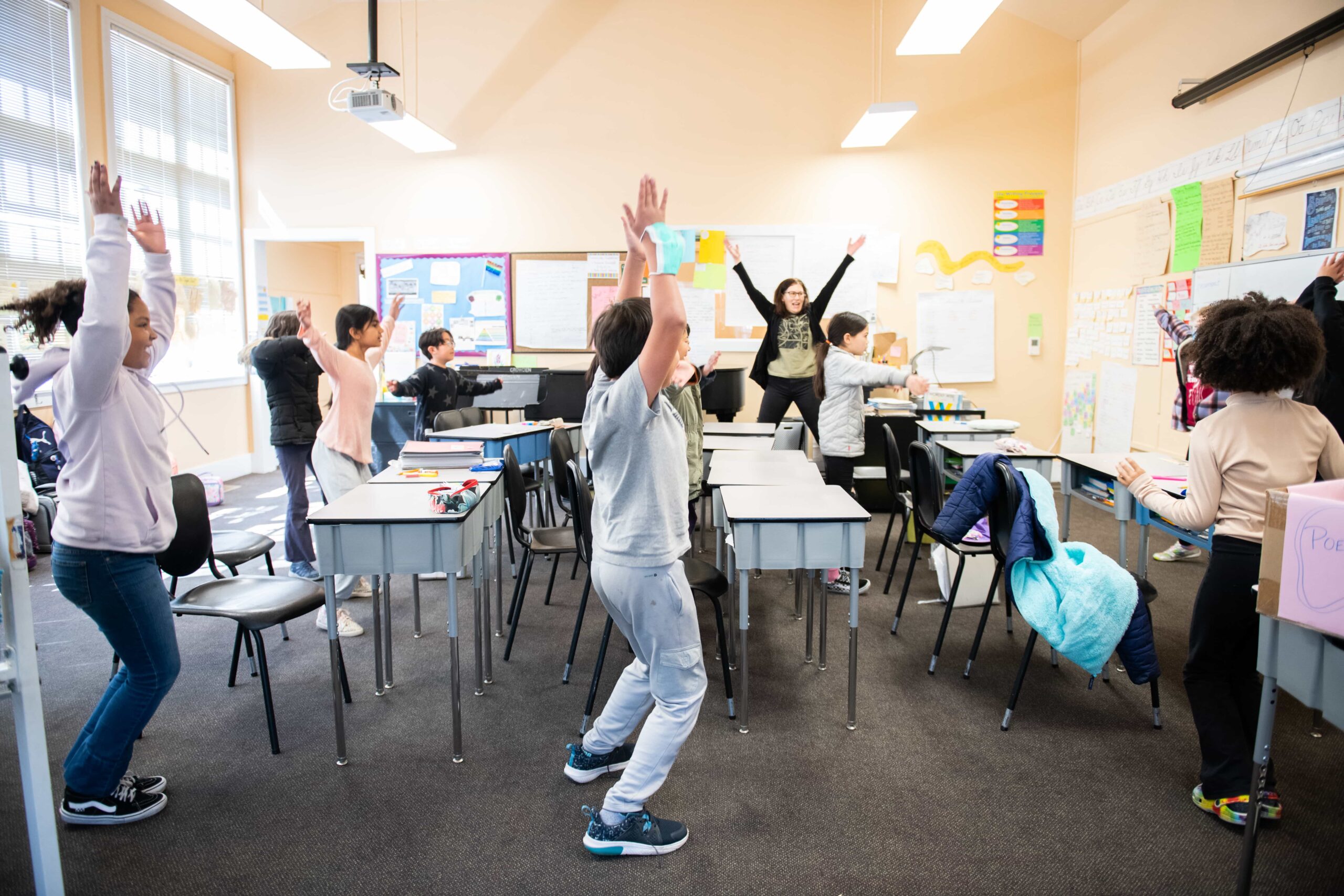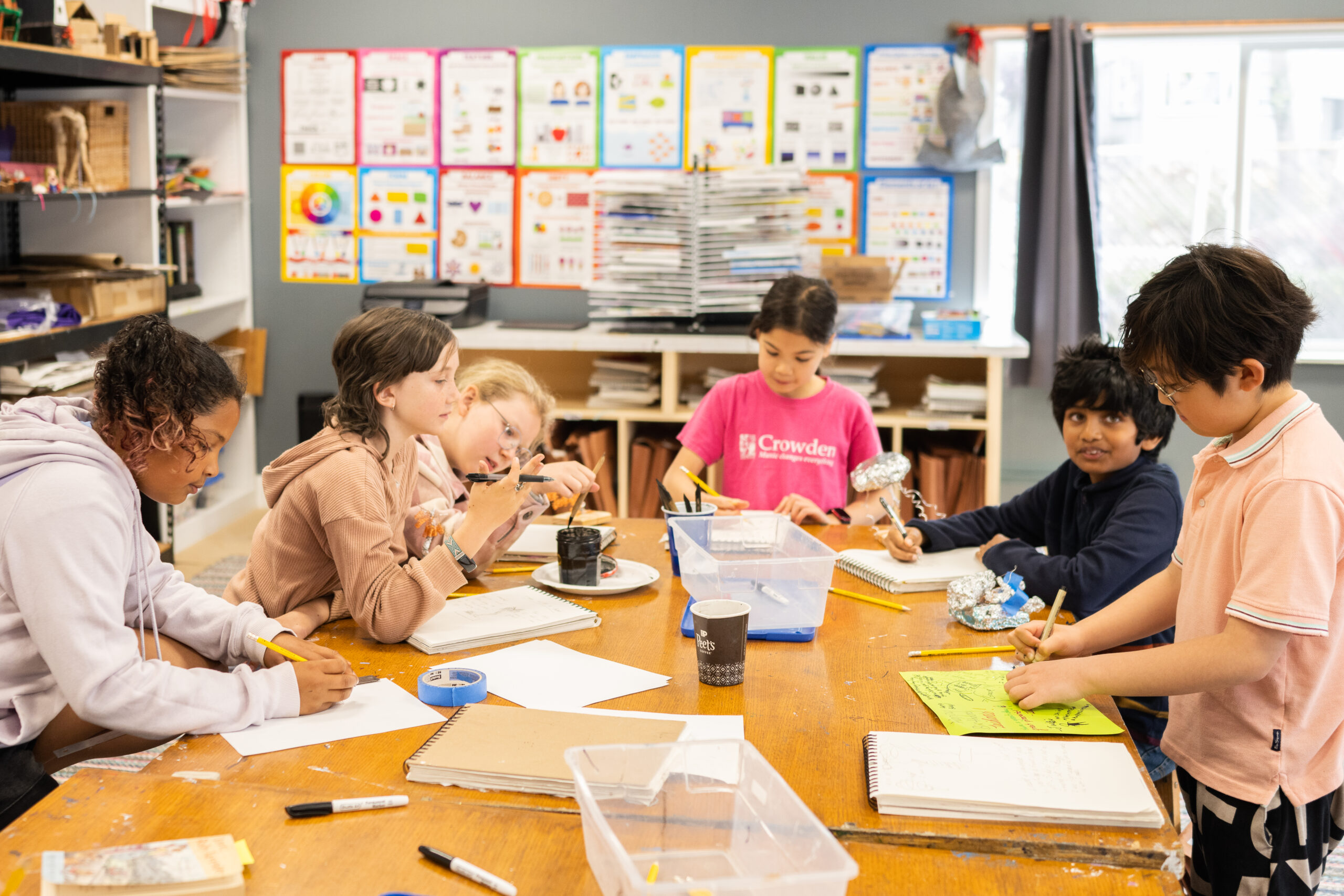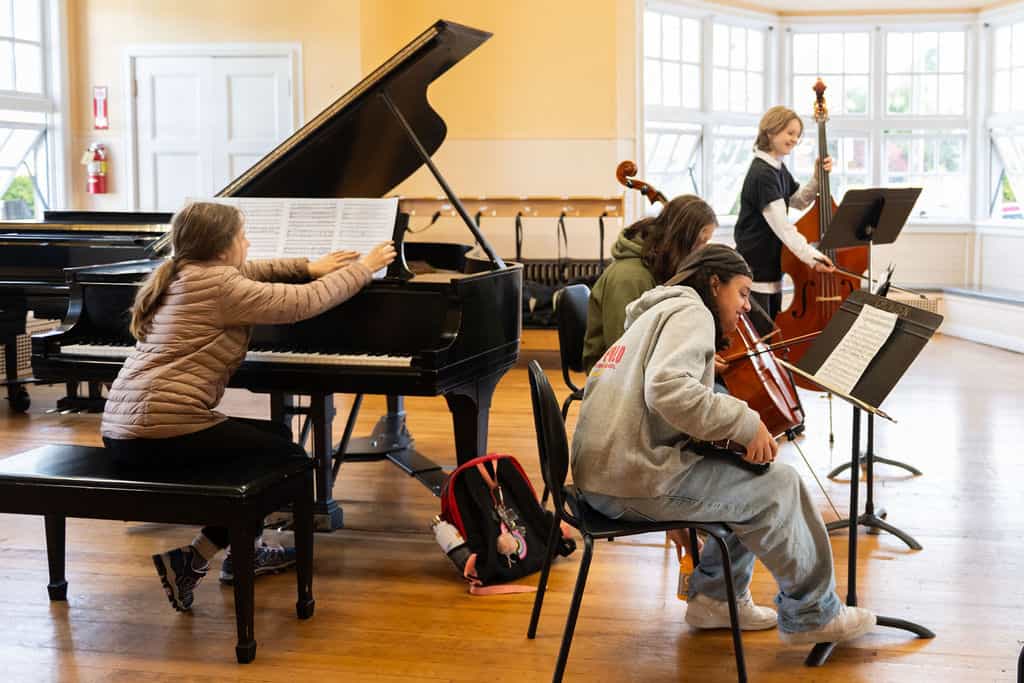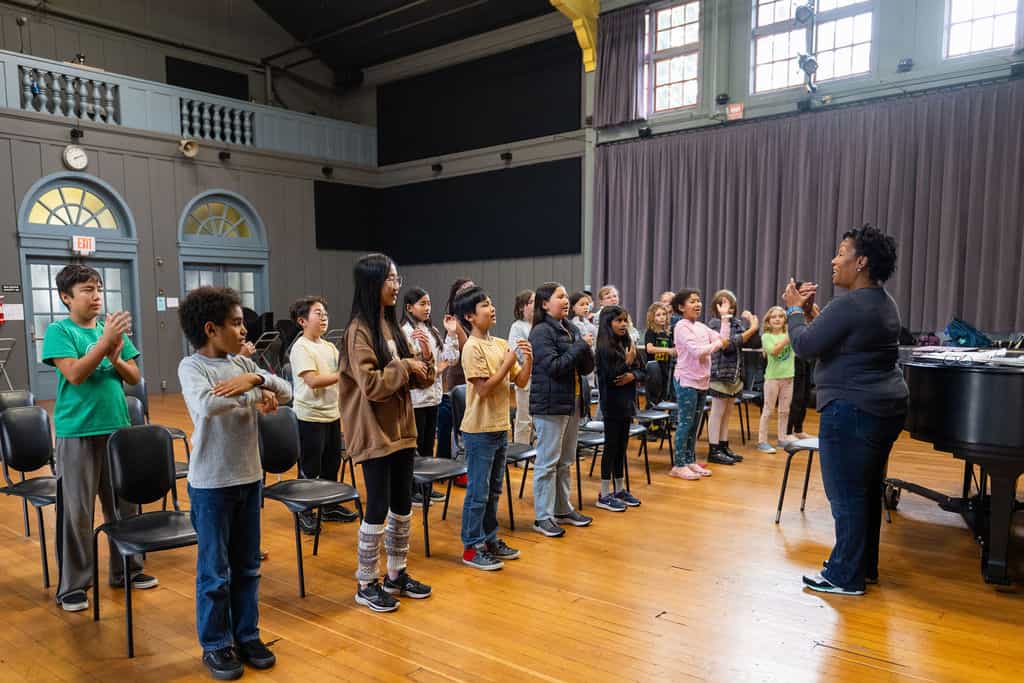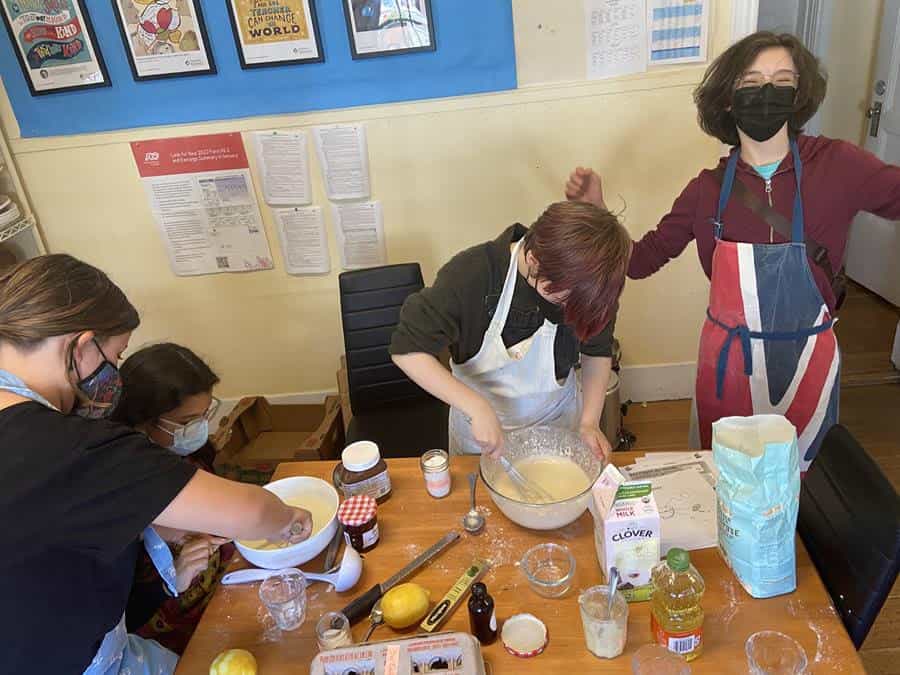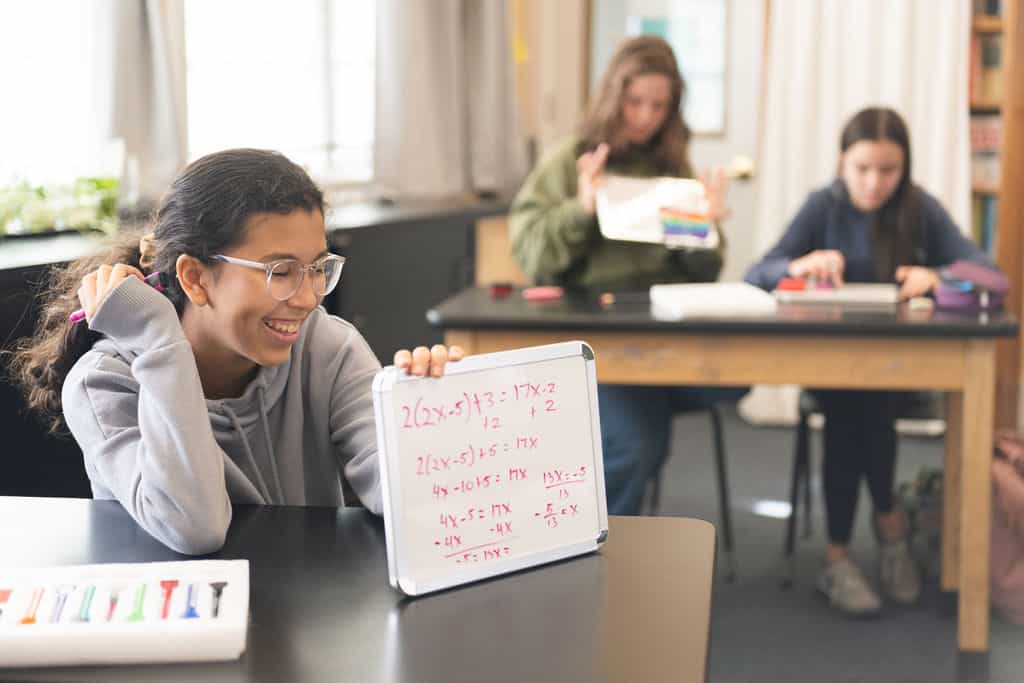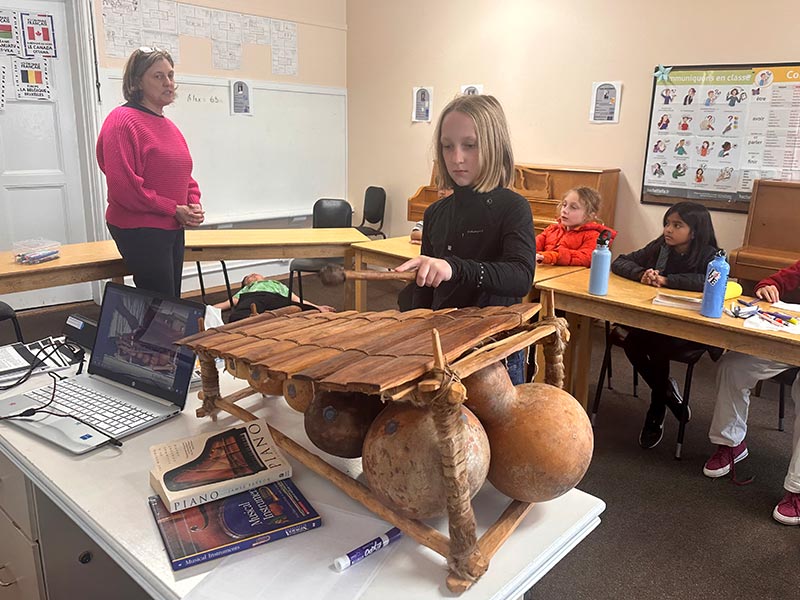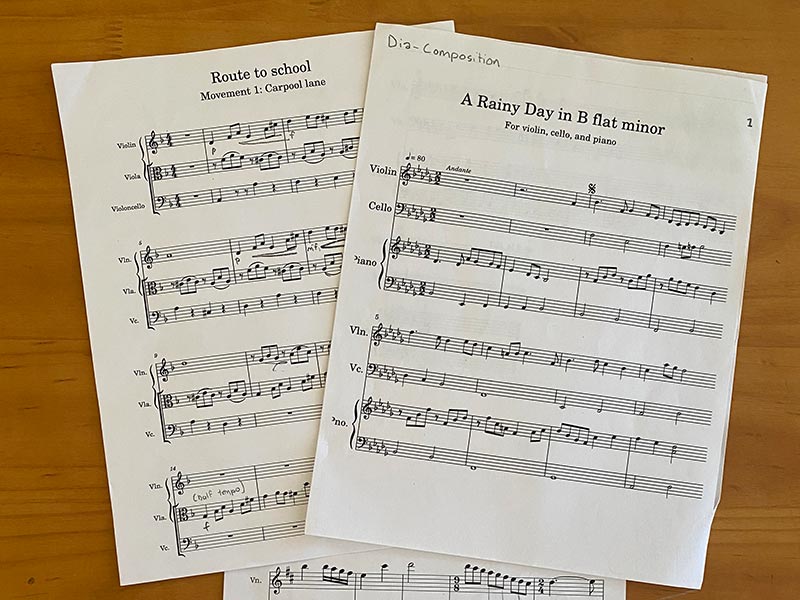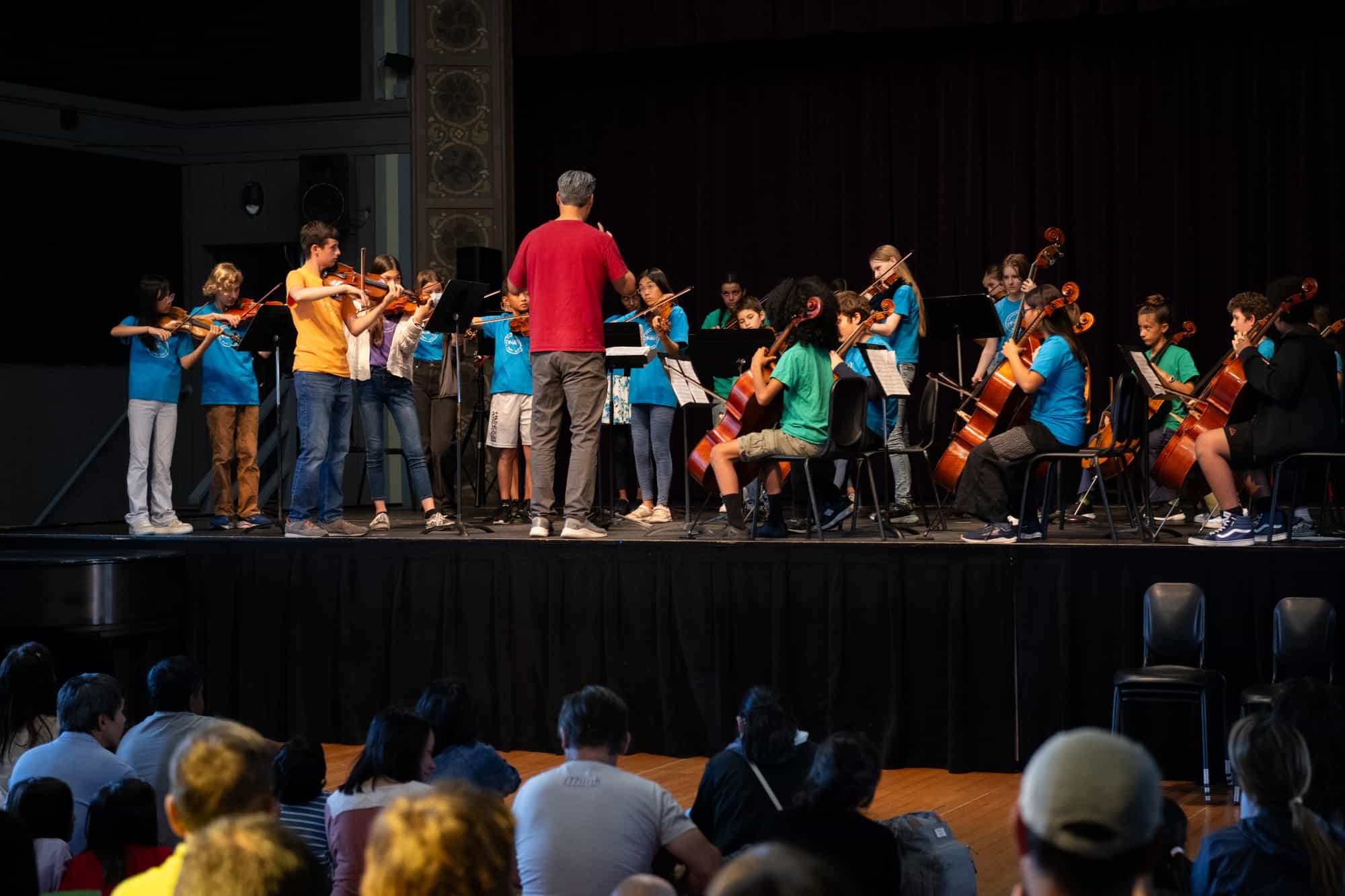At the Crowden School for grades 3–8, every day begins with music.
This simple practice has powerful benefits for our students: activating both sides of their brains, inspiring their creative energy, and encouraging them to find resonance with each other. Still buzzing, students then bring that engagement and excitement into their academic classrooms, where collaborative learning continues.
Crowden School students participate in a full-day chamber music and academic program. Students learn to hone their independent parts and contribute to the whole group. This approach cultivates an environment of empathy and trust where students are accountable and from which they can grow as curious learners and musicians.
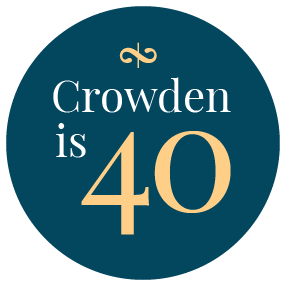
Advisory creates dedicated time during each week to explore and support the social and emotional needs of students. Advisors facilitate grade wide discussions and activities to develop self-awareness, perseverance, empathy, problem-solving, and decision-making, as well as address other academic or social issues that arise. Crowden students also work in cross-grade teams throughout the year on special events and projects during Advisory.
All grades learn to engage with the principles of art and elements of design. The art classroom is a place for curiosity, collaboration, and building resilience through visual language. It is also a place to practice problem solving, such as making choices, making mistakes, and adapting. Classes are designed to instruct students in drawing, painting, using mix media, printmaking, collage, and 3-D projects, and are taught in a studio environment that supports whole student growth and academic development. Sketchbooks help students set a clear studio practice and are used to generate ideas, explore essential questions, research, observe, plan, and reflect on the steps students take within their own creative process to finish work. Throughout the year students are introduced to art history and theory and learn about artists and their art making practice. As students experiment with different materials and learn about their own creative processes they also make decisions on how to curate and present their work. The Art program is grounded in the California Art Standards for Visual Arts.
Ensemble playing requires students to hold their own musical voice and play in collaboration with others. It reinforces the elements of independence and interdependence, nonverbal communication skills, perseverance through repetition, and understanding the end goal of performance is not perfection but the overall experience with others.
Repertoire is chosen based on students’ level of proficiency and experience and covers a variety of composers in the classical music realm.
Whether in small or large musical groups, students engage their active listening skills by responding to the needs of the group and creating what is best for the whole sound. Students take roles as leaders and followers. These alternating perspectives, while contributing to a well-rounded musical education, grow students’ understanding of how to listen, communicate, and empathize with others.
Singing rounds out the musical development of our students through ear-training and specific vocal techniques. Separate choral groups meet the needs of our students as their voices mature and their musical skills develop. Theatrical elements are often incorporated. Chorus performance is included in all concerts.
The English program supports the growth of competent and confident readers and writers. Reading selections are chosen for relevant themes, as mentor texts for writing, for effective use of literary devices, to compare and contrast style and meaning, and to broaden our understanding of the world through many perspectives. Narrative, expository, persuasive, and descriptive pieces are developed and refined through all stages of the writing process. Students learn to express their own ideas clearly and distinctly. Peer revising and editing create opportunities for students to engage with each other in respectful and knowledgeable discourse as well as provide formative assessment feedback for teachers. Standard writing conventions are modeled and reinforced with targeted practice. Students gain a broad repertoire of rich vocabulary by studying root words, word origins, and new terms culled from literature. Teaching materials support the Common Core State Standards for Literacy.
French language study begins in the sixth grade and continues through the eighth grade year. Using authentic resources, the classroom is a language rich environment that supports understanding through gestures, songs, and movement. The program is based upon the use of predictable story formats integrated with music. Essential vocabulary is carefully selected so that students can repeatedly use what they’ve learned and build upon it to achieve competence and confidence. Activities are varied, so that students have the opportunity to work individually, in partners, in small groups, and as a whole class. Each unit ends with a presentation, whether that be a skit, project or other culminating activity. Students are assessed on both their own individual progress and practice and attention to and engaging with their peers. Materials and lessons support the World Languages Framework and content standards.
Instrument Class
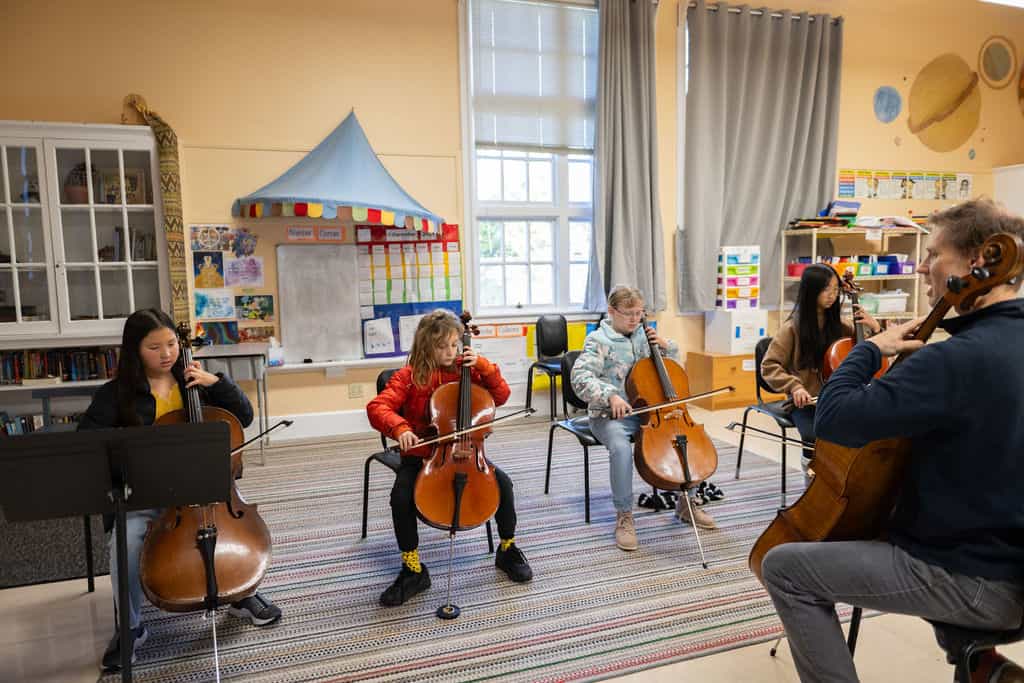
Three times a week the day begins with instrument classes where students are grouped by similar skill levels on their chosen instrument (violin, viola, cello, bass, or piano).
Classes cover the full range of left and right hand techniques for these instruments. Scales, arpeggios, etudes, and small ensemble pieces comprise a major part of the students’ activities in these classes, with an emphasis on proper physical technique on the instrument, as well as tone production and musicality. Upper School violinists will study viola technique for part of the year and may be asked to perform on the viola in one ensemble or orchestra piece.
Social Studies/history classes examine the origins of social structures, the emergence of belief systems and ideologies, and historical events that are shaped by human influence as a means of equipping students with a broader understanding of the modern world. Students begin to understand chronology and synchronicity, cause and effect, choice and voice, power and structure, law and war, land and geography as essential parts of history. Primary and secondary source materials are used to delve into perspective and interpretation of historical experience. From third grade on, students begin to develop an informed understanding of how one learns about history through document-based questioning: looking at what we consider a reliable source, and asking why and how the historical lens shifts over time. Lessons emphasize inquiry-based learning prompted with guiding questions. Teaching sources draw from a variety of publishers and are carefully curated to suit the needs of each grade level and topic. The Crowden School follows the guidelines from the National Council of for the Social Sciences (NCSS) and California Common Core State Standards (CCSS).
The Crowden School math program supports a collaborative learning environment that encourages students to engage with the rigors of mathematics. The absorption of complex material is an iterative process. Thus math concepts are revisited with increasing sophistication in each grade level. An early foundation of number sense and calculation strategies are set in the Lower School, and built upon so that students complete a course of pre-algebra by seventh grade. The eighth grade year offers a high school-level course of algebra. Developing student confidence and capacity to access their math understanding is a primary goal of the math program. Lessons are embedded in problem-solving models. Visual thinking and geometry concepts are integrated at all grade levels and allow students to further develop deductive reasoning skills. Our program follows the guidelines from the National Council of Teachers of Mathematics (NCTM) and California Common Core State Standards (CCSS).
Mathematical practices across all grades encourage students to:
- Make sense of problems and persevere in solving them
- Reason abstractly and quantitatively
- Construct viable arguments and critique the reasoning of others
- Model mathematics
- Use appropriate tools strategically
- Attend to precision
- Look for and make use of structure
- Look for and express regularity in repeated reasoning
Music history classes aim to enrich the musical experience through an understanding and appreciation of a variety of musical styles. Students build onto their musical vocabulary, explore the origins of our musical notation system, study instruments of the world, and learn about programmatic music. They look at how music has helped human societies in creating stories and explaining our relationship to each other and the natural world. Students learn to differentiate the eras of European classical music: medieval, renaissance, baroque, classical, romantic, and modern, and to recognize musical influences in other genres. Students hone their listening and note-taking skills in class and make presentations each semester, and get hands-on experiences with traditional instruments from other cultures when possible.
These classes teach the basic elements and concepts of music, both as a written and auditory language. Students are grouped by their level of music theory understanding and experience. First level classes are most interested in developing a sense of inner pitch and rhythm through ear training, dictation, and drills. Students begin to make connections between the visual and auditory aspects of music theory.
Secondary levels reinforce and build on concepts including key relationships, more complex rhythms and harmonic progressions, and notation skills geared toward writing their own compositions. Advanced levels focus on composition in various forms. Advanced students bring together the skills learned in earlier classes, combined with creativity and experimentation, to develop their ability to compose music for various types of ensembles.
Similar to the skill-building practiced in smaller ensembles, all string players participate in an orchestra under the guidance of a conductor. This allows students to expand their range in a larger group. Specific repertoire may require harpsichord or piano in which case piano students will have the opportunity to join the orchestra. Otherwise, piano students rehearse piano duos and keyboard harmony during these class times. Whether in small or large musical groups, students engage their active listening skills by responding to the needs of the group and creating what is best for the whole sound. Students take roles as leaders and followers. These alternating perspectives, while contributing to a well-rounded musical education, grow students’ understanding of how to listen, communicate, and empathize with others.
Physical Education

PE classes at Crowden are designed to support the ensemble learning model of chamber music. Each player’s individual participation is essential to the goals of the group. Therefore, teamwork requires a commitment to strengthening one’s individual skills and practice in learning how to use them for the greater purpose of the game. Throughout each unit, students learn proper form and technique, as well as rules and strategy. Attention is given to posture, breathing, and listening to one’s own body cues. Students work on accurate and specific communication, mutual respect and sportsmanship, and perseverance. In addition, classes are held both on and off campus requiring street safety, ambassadorship, and community citizenship. Each class begins with relevant information regarding the sport or a technique demonstration. Special attention is given to understanding the values of one’s personal best versus a win and to understanding how to be a respectful competitor. Students are evaluated on their participation, willingness to try new things, and personal progress.
Starting with observations of the world around us, Crowden's science curriculum teaches students to test the scientific method through hands-on learning experiences. Working collaboratively in groups, students record their observations and data, explain results, and make critical analyses. Science study and practice at all grade levels integrates specific content with scientific practices. Content areas in all grades span the natural sciences (life, physical, earth/space) and health. Students engage in scientific and engineering practices through investigation, modeling, inquiry-driven data collection and analysis. Teaching is grounded in the Next Generation Science Standards (NGSS). Thus our science goals across all grades at Crowden are to develop the following abilities in all students:
- Ask an answerable question
- Develop an initial idea
- Follow a procedure and begin to develop how to create a procedure
- Collect data accurately
- Assess whether data answers the question
- Write a coherent conclusion
The Crowden School admits students of any race, color, national and ethnic origin, sexual orientation, and gender identity or expression to all the rights, privileges, programs, and activities generally accorded or made available to students at the school. It does not discriminate on the basis of race, color, national and ethnic origin, religion, disability, sexual orientation, or gender identity or expression in administration of its educational policies, admissions policies, scholarship and loan programs, and athletic and other school-administered programs.
Crowden is committed to creating a diverse environment, and we value our inclusive community of students, parents, and faculty and staff of all backgrounds. Together, we celebrate our many differences and unite in our shared love of music of all kinds and origins.

